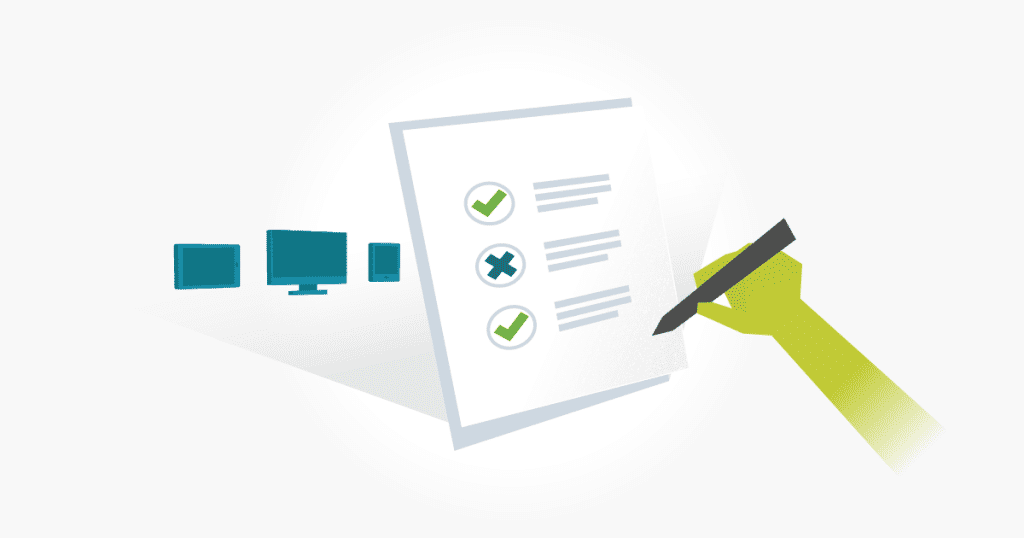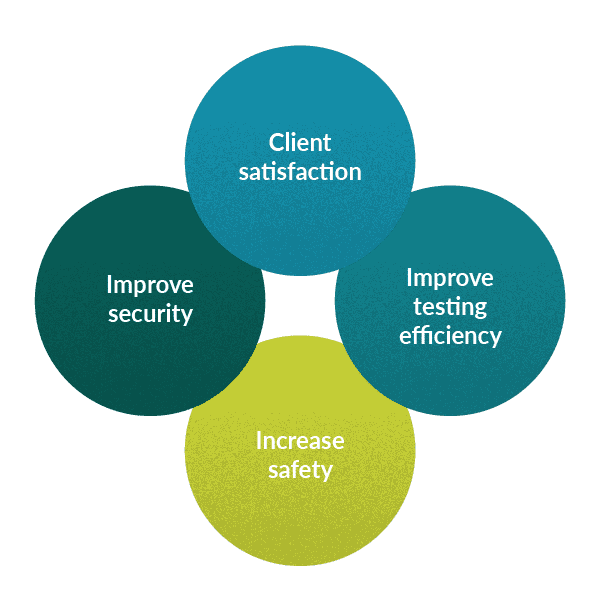Functional testing is a type of black box testing that verifies that a system’s primary function work as intended according to its requirements. The business provides functional requirements that describe what they expect will be the user actions and results.
We use the terms black box and white box testing as simple ways to describe assessing the system from the user’s point of view, and how they would perform input and experience the output. The black box approach is used when the user already knows what the functions should do. However, the white box approach is used when the user understands the system’s source code or other internal workings. This comparison explains why functional testing is considered part of the black box approach.

Functional requirements can come in different forms. For example, they may be formal, sometimes even part of a Service Legal Agreement (SLA) or contract. When this is the case, these requirements can be legally binding. Another example is user stories. When user stories are the requirement, the tester can take on a different persona to meet the needs of multiple types of users. Flow diagrams are another type of functional requirements. They illustrate the process incrementally, making it clear how the user performs steps and responds to each action. When requirements do not exist or are vague, the tester should seek clarification from the business or stakeholder.
Aims
When executing functional testing, the system’s overall quality will improve.
- Client satisfaction – Functional testing is performed from the user’s perspective. Client satisfaction improves when the system meets or exceeds the user’s expectations.
- Improve testing efficiency – A tester can easily judge if the system passes or fails when requirements are well defined, which results in quicker and more accurate results.
- Increase safety – When compliance testing is involved, products are regarded as safer once they pass functional testing.
- Improve security – A product is considered better protected when security testing is involved. This aspect is critical when personal user data or financial records are accessible within the application.

Risks of not Performing Functional Testing
When functional testing is either ignored or not properly executed, the product is at risk for failure.
- Legal – When a product doesn’t deliver the functions agreed upon in SLAs or other contracts, the company could at risk of litigation.
- Product and company reputation – Failing products or those with ongoing issues can damage a company’s reputation. When users have disappointing experiences, they are likely to reject the company’s products in the future.
- Financial loss – When a product doesn’t work as required, it can lose customers and revenue.

Functional vs. Non-Functional Testing
The main difference between functional and non-functional testing is that the former focuses on the user’s requirements while the latter focuses on the user’s expectations. In addition, non-functional testing evaluates the whole system rather than specific or individual functions.
To help understand the difference, consider a login function. To perform functional testing, one could write test cases to verify that users can log in when they enter the correct username and password. They could also ensure the user cannot log in if they enter an incorrect username or password. These tests would help determine if the function satisfied the user’s requirement.
To implement non-functional testing, one could do performance testing to determine if the system meets the user’s expectations. For example, if the user enters a correct username and password and the system processes the information for three minutes before being redirected to their account, this would be unlikely to meet the user’s expectations. Both testing types are essential, and by performing both, you will have more test coverage and a higher quality product.
How to Perform Functional Testing
In its most basic form, functional testing uses the following five steps:
- Determine what functions to test and understand the requirements – A tester should understand how to perform each function and know expected outcomes. If there is doubt, they should know who to contact for more specific details.
- Create your test cases – Knowing how the system works will allow you to write test cases that verify each requirement:
- Create input test data according to the requirements – The data can be manually created or attained from a production environment. Depending on your project, you could include valid/invalid data, use case data, or even leave the fields blank to see what happens when no data is submitted.
- Determine expected results – Requirements should contain clearly defined expected results. Before you execute the tests, you should know what will be considered a pass or fail for both positive and negative tests.
- Execute your test cases – These can be done manually or automated, depending on your project. When you execute the tests, note any discrepancies in the results to provide feedback to the developer.
- Compare actual results with expected results – Evaluate if they pass or fail, or if you need to perform more testing based on the requirements.
Challenges
The number one challenge of functional testing is probably having the product managers write well-defined and thorough requirements. It’s a good idea for testers to communicate with the product team ahead of time about what they need to see in the requirements.
Another challenge is knowing what parts to automate in functional testing. The purpose of automation is to release a tester from repeatedly performing the same tasks. Automation should help by saving time and getting faster results. When determining which tasks to automate, the tester should also consider the maintenance of the test and the extra time needed for this. Just as code changes, automated tests have to be updated. If the section of code changes often or is unstable, it may not be a good candidate for automation.
Types of Functional Testing
Unit Testing – Unit testing is a form of testing performed early in the software development lifecycle. Developers typically do it in the development phase. It includes writing scripts to test small sections or units of code. By performing unit testing, developers can discover and resolve bugs before they reach the system.
Integration Testing – After completing unit testing, the small portions of code are integrated with other code sections. At this point, testers will check how the code interacts with other pieces. Integration testing is necessary because it ensures that multiple units of code will work together and as expected following integration.
System Testing – System testing has several different types of functional testing.
- Regression Testing – Regression testing ensures pre-existing sections of code still work as expected after introducing new code. Regression tests should be done whenever a new feature, function, or other code change is made.
- Smoke Testing – Smoke testing is a quick way to ensure a system’s primary functions are working. It is often done as a build verification after deployment to an environment. Testers will perform the most basic standard functions to verify they work as expected.
- Sanity Testing – Sanity testing is another simple test. Instead of verifying the build, it involves tests to determine if it makes sense to continue with development and further testing or if immediate changes need to be made. It is typically performed after smoke testing.
- Usability Testing – Usability testing makes sure that the system is easy to understand and use, even for less technically advanced users. It is often performed by actual users in a staging environment or as part of beta testing. The users’ feedback helps direct future code changes.
Acceptance Testing – Acceptance testing is the last testing level and is usually performed by the customer or a stakeholder to confirm the function meets the requested needs. Acceptance testing is a way to sign off on the request.
Functional Testing Tools
Several tools are available to help with functional testing and test case management. When selecting a tool, it’s essential to consider the needs of your project.
Manual Testing Tools
- TestLodge – TestLodge is an easy-to-use test management system with a modern interface and detailed reporting features. It has customizable yet straightforward dashboards and several pricing options, depending on your project’s needs.
- TestLink – TestLink is a test management tool with several integration options. It’s an open-source system with both basic and advanced features.
For more suggestions, make sure to check out our favorite free test case management tools.
Automation Testing Tools
- NUnit – NUnit is an open-source unit testing framework designed for .NET languages.
- JUnit – Similarly, JUnit is an open-source unit testing framework created for Java.
- Selenium WebDriver – Selenium is probably the most popular automation tool. This free testing framework supports multiple browsers and languages.
Conclusion
Functional testing is a form of black box testing where the tester considers the user’s point of view. Functional testing focuses on a system’s specific function and has well-defined requirements for the expected outcome. Tools are available for unit testing and automated testing. Automated tools should help save the tester time and not be overly complicated. In addition, functional testing leads to higher customer satisfaction because it ensures the system meets the user’s needs.

